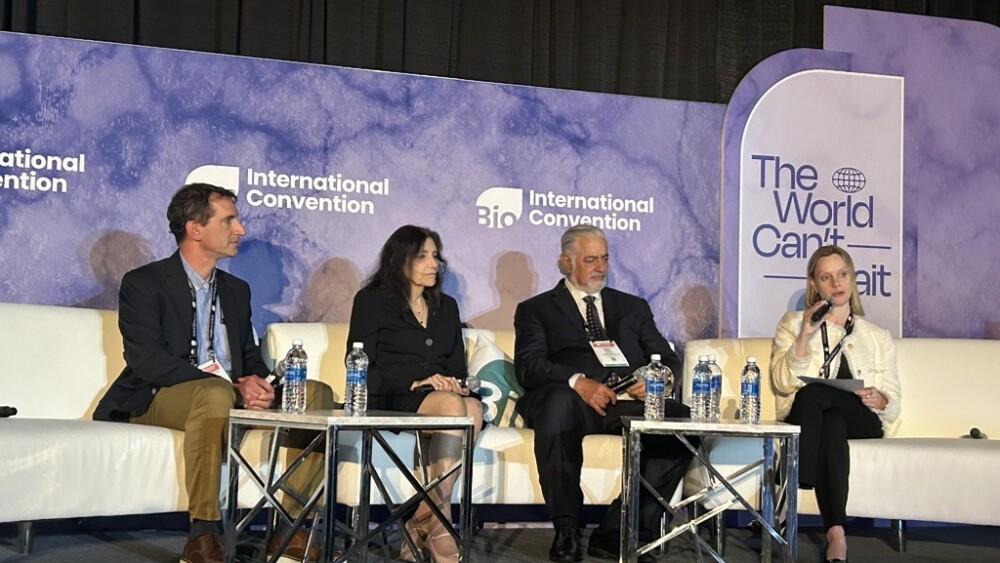Ardelyx, Inc. today announced multiple presentations covering additional positive clinical observations of XPHOZAH at the National Kidney Foundation 2022 Spring Clinical Meetings (NKF SCM2022), which is taking place in Boston, MA from April 6-10, 2022.
WALTHAM, Mass., April 7, 2022 /PRNewswire/ -- Ardelyx Inc. (Nasdaq: ARDX), a biopharmaceutical company founded with a mission to discover, develop and commercialize innovative first-in-class medicines that meet significant unmet medical needs, today announced multiple presentations covering additional positive clinical observations of XPHOZAH at the National Kidney Foundation 2022 Spring Clinical Meetings (NKF SCM2022), which is taking place in Boston, MA from April 6-10, 2022. Ardelyx has completed three successful Phase 3 pivotal trials, and two additional Phase 4 clinical trials (OPTIMIZE and NORMALIZE) for XPHOZAH, an investigational, first-in-class, phosphate absorption inhibitor for the control of serum phosphorus in adult patients with chronic kidney disease (CKD) on dialysis. XPHOZAH was discovered and developed by Ardelyx. "The responder analysis from the PHREEDOM trial, the onset of action analysis from the Phase 3 program, and new data generated from our Phase 4 studies further build on the body of evidence that support the potential role that XPHOZAH, as a first-in-class phosphate absorption inhibitor, could play in the management of hyperphosphatemia," said Laura Williams, M.D., M.P.H., chief medical officer for Ardelyx. We continue to pursue approval of XPHOZAH and believe this novel treatment option represents an important innovation for patients and providers in the nephrology community." Arnold Silva, M.D., Ph.D., director of Clinical Research at Boise Kidney and Hypertension Institute, added, "Achieving target phosphorus levels in our patients with CKD on dialysis is an extraordinary challenge. We need novel mechanism therapies like XPHOZAH that have demonstrated the ability to increase the proportion of patients who achieve target phosphorus levels. Additionally, the patient reported outcomes captured in the OPTIMIZE trial further illustrate the potential value this additional treatment option could bring to patients." Posters presented at NKF:
About OPTIMIZE OPTIMIZE is a randomized, open label study, which included 330 patients with chronic kidney disease (CKD) on dialysis with hyperphosphatemia. The study was designed to evaluate different methods of initiating XPHOZAH to optimize phosphorus management in both binder-naïve and binder-treated patients. The objective was to evaluate the ability of XPHOZAH, with its novel blocking mechanism, administered as core therapy for the treatment of hyperphosphatemia in adult patients with chronic kidney disease (CKD) on dialysis, alone or in combination with phosphate binders, to achieve target serum phosphorus (s-P) levels ≤5.5 mg/dL. The study enrolled patients with s-P >5.5 and ≤10.0 mg/dL during stable phosphate binder treatment which were randomized in a 1:1 ratio to two different treatment cohorts, as well as patients who were phosphate binder naïve with s-P >4.5 and ≤10.0 mg/dL in a third cohort. About PHREEDOM PHREEDOM is a one-year Phase 3 study with a 26-week open-label treatment period, a 12-week double-blind, placebo-controlled randomized withdrawal period, and a 14-week open-label safety extension period. The study randomized a total of 564 patients with CKD on dialysis who had a serum phosphorus level between 6.0 mg/dL and 10.0 mg/dL and had an increase in serum phosphorus of at least 1.5 mg/dL after an up to 3-week phosphate binder wash-out period. The primary efficacy endpoint of the study was the difference in change in serum phosphorus between the pooled XPHOZAH-treated patients and placebo-treated patients in the efficacy analysis set from the end of the 26-week treatment period to the endpoint visit of the 12-week randomized withdrawal period. The efficacy analysis set (n=131) included patients who completed the 26-week treatment period and achieved a 1.2 mg/dL decrease in serum phosphorus in the same period. About NORMALIZE Patients completing the Phase 3 PHREEDOM trial from both the XPHOZAH arm and the sevelamer safety control arm had the option to participate in NORMALIZE, an open-label 18-month extension study. Patients entering the study from the XPHOZAH arm with serum phosphorus levels in the normal range were followed with no medication changes. Patients entering the study from the XPHOZAH arm with serum phosphorus > 4.5 mg/dL had sevelamer tablets added incrementally to achieve normal serum phosphorus levels. Patients entering the study from the sevelamer safety control arm had XPHOZAH tablets added to their treatment regimen while reducing sevelamer tablets based on their serum phosphorus value to achieve normal serum phosphorus levels. The primary objective of the study was to evaluate the ability of XPHOZAH alone or in combination with sevelamer to achieve serum phosphorus levels within the normal range (2.5 to 4.5 mg/dL) in patients with chronic kidney disease on dialysis whose serum phosphorus levels were greater than 6.0 mg/dL at baseline. About XPHOZAH® (tenapanor) XPHOZAH, discovered and developed by Ardelyx, is a first-in-class phosphate absorption inhibitor (PAI) that has a unique mechanism of action and acts locally in the gut to inhibit the sodium hydrogen exchanger 3 (NHE3), reducing phosphate absorption through the paracellular pathway, the primary pathway of phosphate absorption. This novel blocking mechanism enables a one 30mg tablet BID dosing regimen. The most common side effect with XPHOZAH in clinical trials was diarrhea. About Hyperphosphatemia Hyperphosphatemia is a serious condition resulting in an abnormally elevated level of phosphorus in the blood that is estimated to affect the vast majority of the 550,000 patients in the United States with CKD on dialysis. The kidney is the organ responsible for regulating phosphorus levels, but when kidney function is significantly impaired, phosphorus is not adequately eliminated from the body. As a result, hyperphosphatemia is a nearly universal condition among people with CKD on dialysis with internationally recognized KDIGO treatment guidelines that recommend lowering elevated phosphate levels toward the normal range (2.5-4.5mg/dL). About Ardelyx, Inc. Ardelyx was founded with a mission to discover, develop and commercialize innovative first-in-class medicines that meet significant unmet medical needs. Ardelyx's first approved product, IBSRELA (tenapanor) is available in the United States. Ardelyx is developing XPHOZAH® (tenapanor), a novel product candidate to control serum phosphorus in adult patients with CKD on dialysis, which has completed three successful Phase 3 trials. Ardelyx is also advancing RDX013, a potassium secretagogue, for the potential treatment of elevated serum potassium, or hyperkalemia, a problem among certain patients with kidney and/or heart disease and has an early-stage program in metabolic acidosis, a serious electrolyte disorder in patients with CKD. Ardelyx has established agreements with Kyowa Kirin in Japan, Fosun Pharma in China and Knight Therapeutics in Canada for the development and commercialization of tenapanor in their respective territories. Forward Looking Statements To the extent that statements contained in this press release are not descriptions of historical facts regarding Ardelyx, they are forward-looking statements reflecting the current beliefs and expectations of management made pursuant to the safe harbor of the Private Securities Reform Act of 1995, including the potential for XPHOZAH in treating hyperphosphatemia, either alone or in combination with phosphate binders. Such forward-looking statements involve substantial risks and uncertainties that could cause Ardelyx's future results, performance or achievements to differ significantly from those expressed or implied by the forward-looking statements. Such risks and uncertainties include, among others, uncertainties associated with the commercialization of drugs, the drug development process and the regulatory approval process. Ardelyx undertakes no obligation to update or revise any forward-looking statements. For a further description of the risks and uncertainties that could cause actual results to differ from those expressed in these forward-looking statements, as well as risks relating to Ardelyx's business in general, please refer to Ardelyx's Annual Report on Form 10-K filed with the Securities and Exchange Commission on February 28, 2022, and its future current and periodic reports to be filed with the Securities and Exchange Commission.
SOURCE Ardelyx |
||
Company Codes: NASDAQ-NMS:ARDX |





